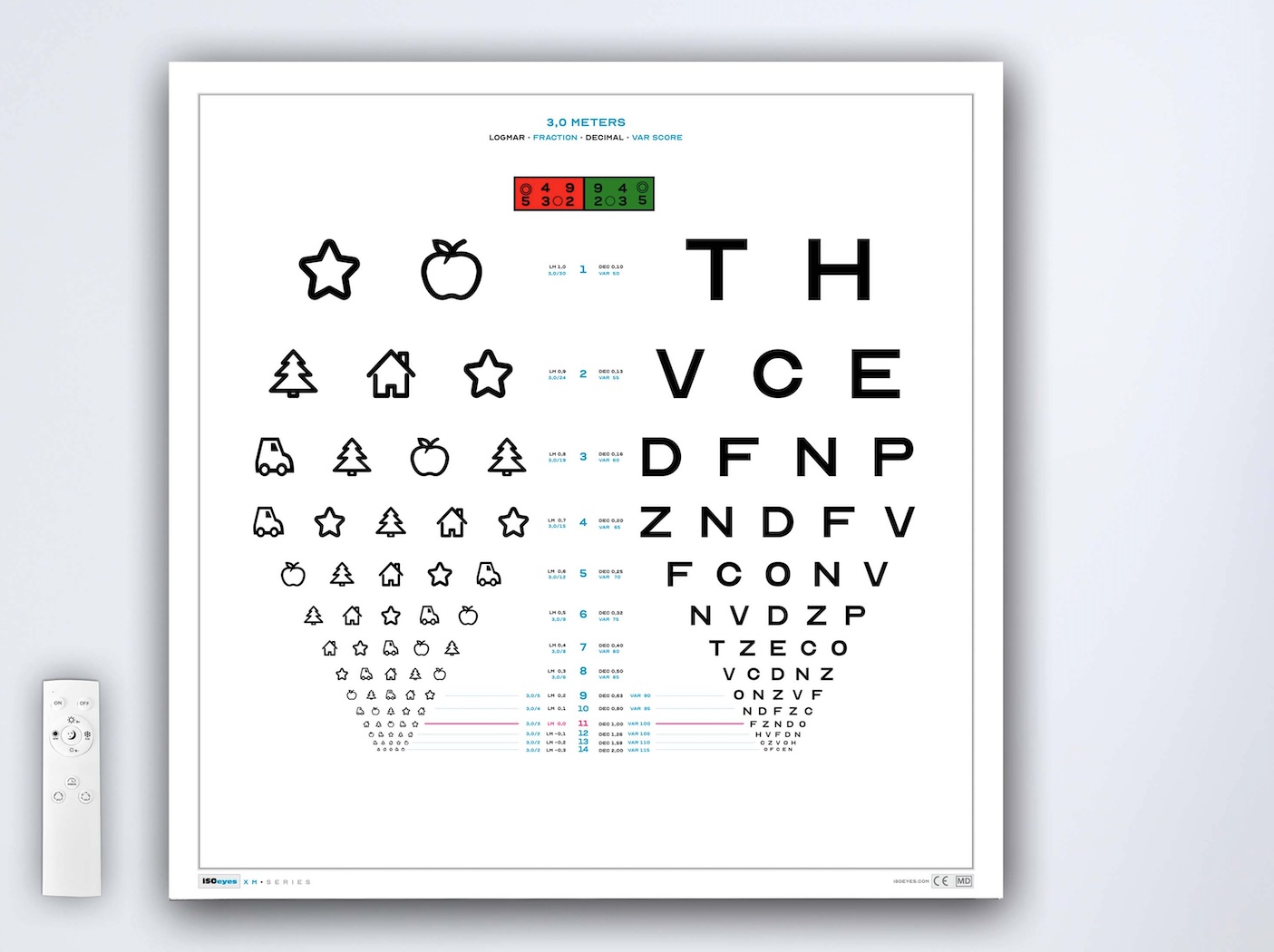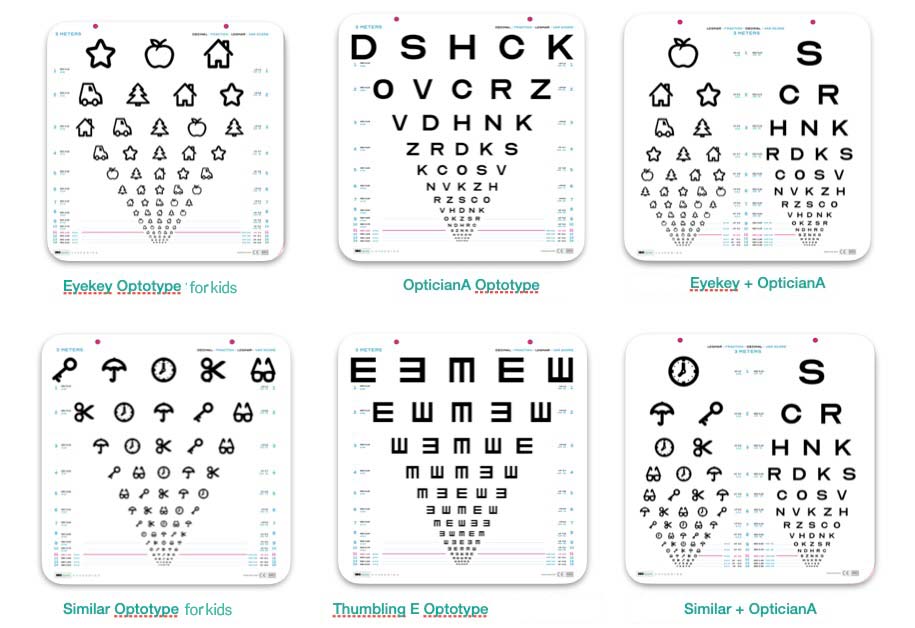Lighting Conditions Have a Major Impact on Vision Test Results!
If you want to offer children and adults the optimal accurate vision testing environment – then you should choose the LED vision chart from ISOeyes.
The New Vision Chart from ISOEyes
– uses LED light from 72 small prisms, ensuring a completely uniformly illuminated panel, which guarantees a fair vision test at all levels. Moreover, it is extremely energy-efficient!
Here is one of many models to choose from: 3-meter combo chart on a 60×60 cm light panel)
 Click on the image of the chart to view it in a larger size. Note that the chart includes both Fraction (6/6), Decimal, and LogMAR values. This facilitates understanding and the transition to the new measurement units. The red line marks the normal vision level LogMAR 0.0 (the same as 6/6 or Decimal 1.0).
Click on the image of the chart to view it in a larger size. Note that the chart includes both Fraction (6/6), Decimal, and LogMAR values. This facilitates understanding and the transition to the new measurement units. The red line marks the normal vision level LogMAR 0.0 (the same as 6/6 or Decimal 1.0).
Since you’re changing anyway, choose the best for both children and adults!
In addition to the requirement to use a logarithmic scale, ISO 8596 also focuses on uniform lighting of the vision chart within a brightness spectrum of between 700 and 1300 Lux, measured from the testing distance.
Remaining within this spectrum is not achievable with arbitrary daylight or ceiling lights in the testing room. The light can vary significantly, but is most often below the minimum 700 lux. Likewise with the color temperature, which with sunlight reflection is often too warm (below 3000 kelvin), and too warm light degrades the vision testing environment.
With the new vision chart panel from ISOeyes, you can adjust both the lux level and color temperature to achieve the optimal vision testing environment. Neither of these adjustments can be achieved with the flat wall charts featured on this page.
A Wide Range of Options – Get Precisely the Chart That Suits You and Your Clinic Room
ISOEyes offers energy-efficient LED charts with remote control in 4 sizes, supporting all testing distances between 2.5 meters and 6 meters. Additionally, a wide range of optotypes (symbols on the charts) is offered, ensuring that all testing environments for adults, preschool and schoolchildren, illiterate individuals, and more are supported.
All charts from ISOeyes fully comply with the Health Authority’s recommendations. The charts are CE/MD approved and also meet all requirements of the internationally adopted ISO 8596 standard for the construction of vision charts.




















